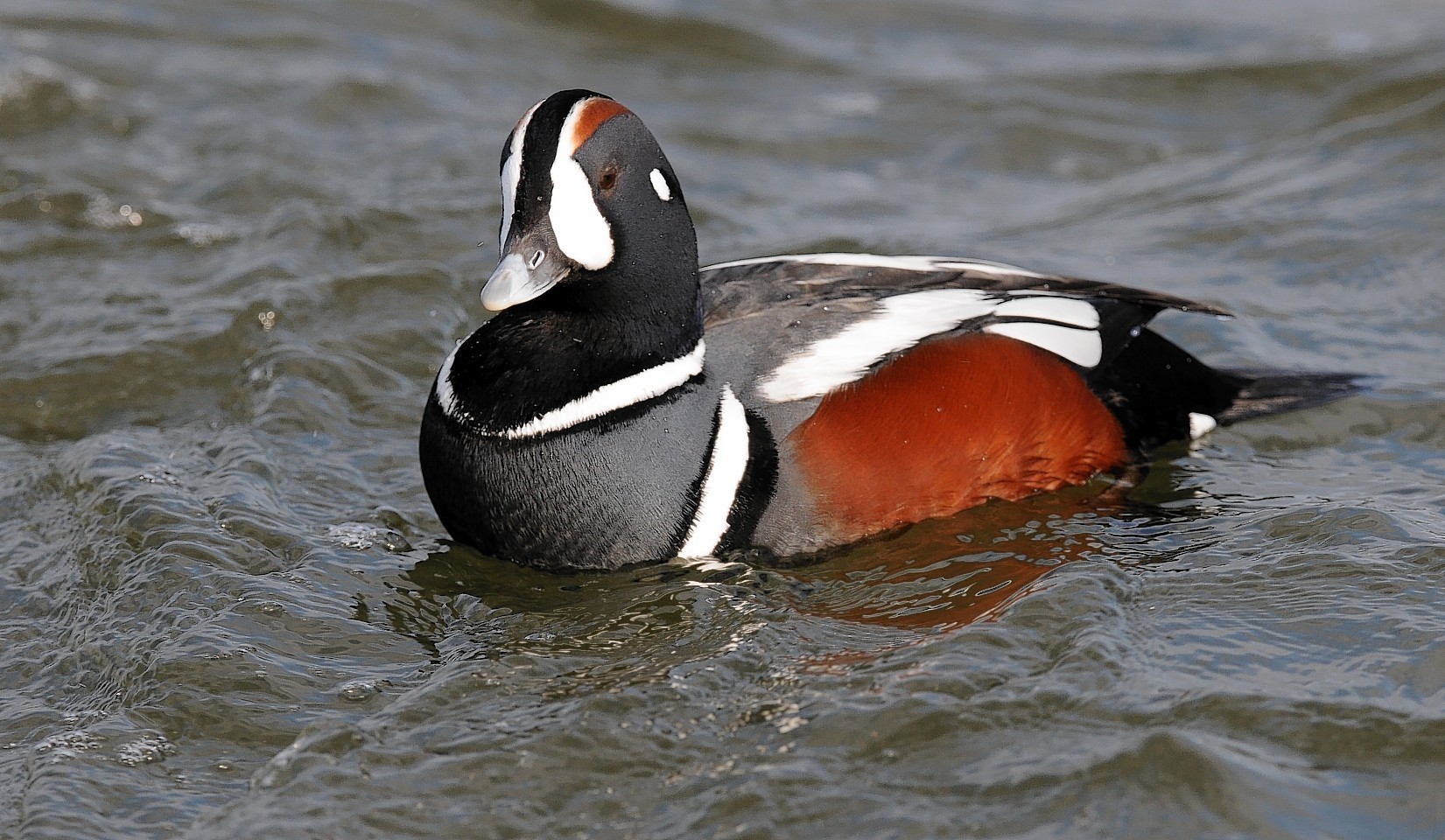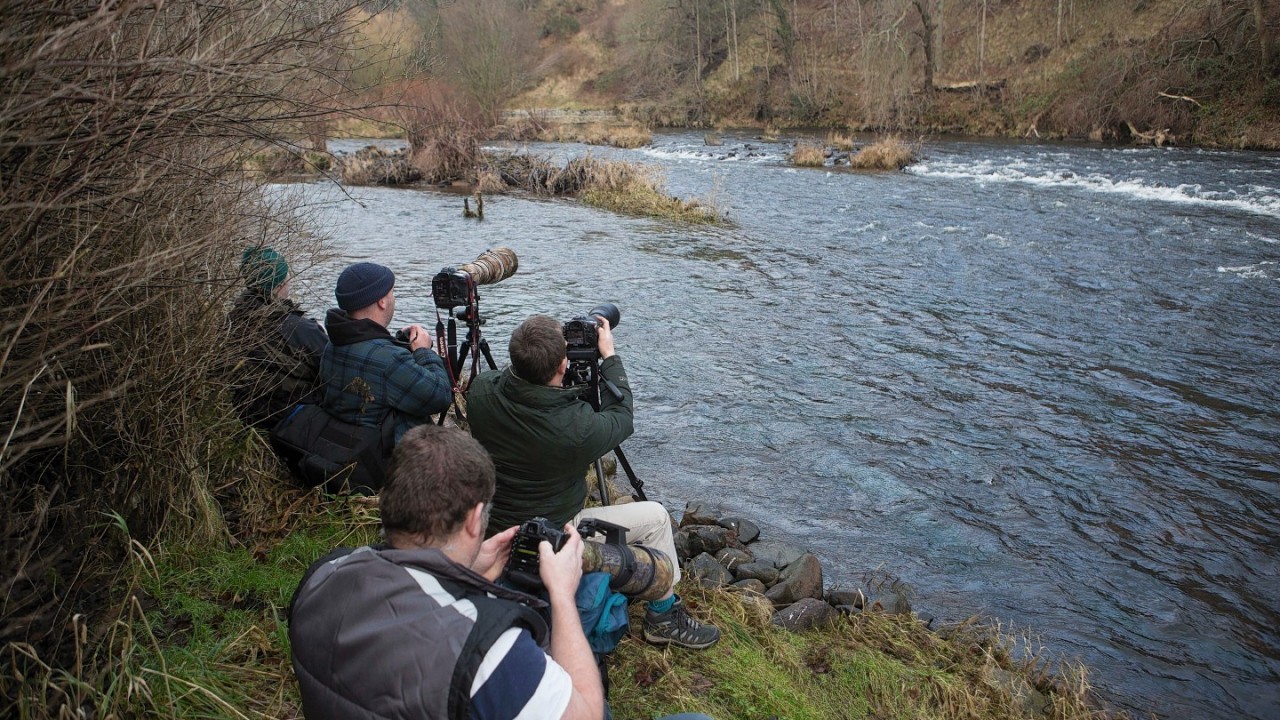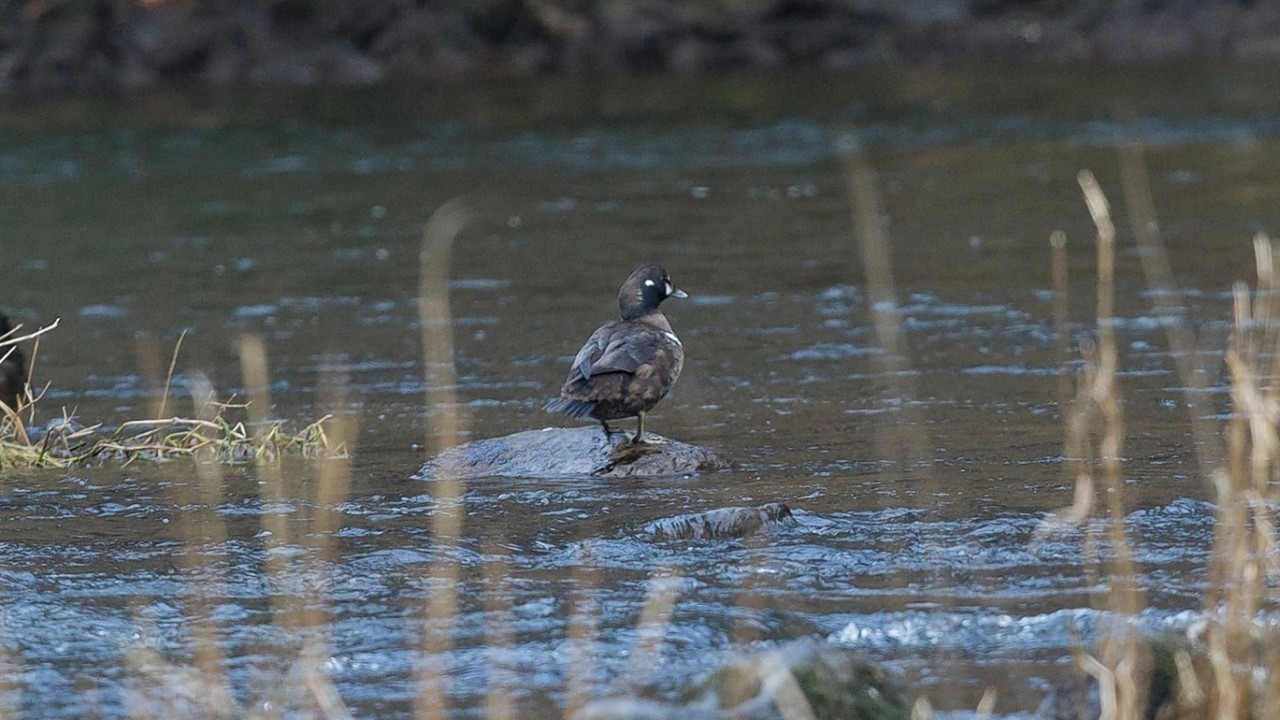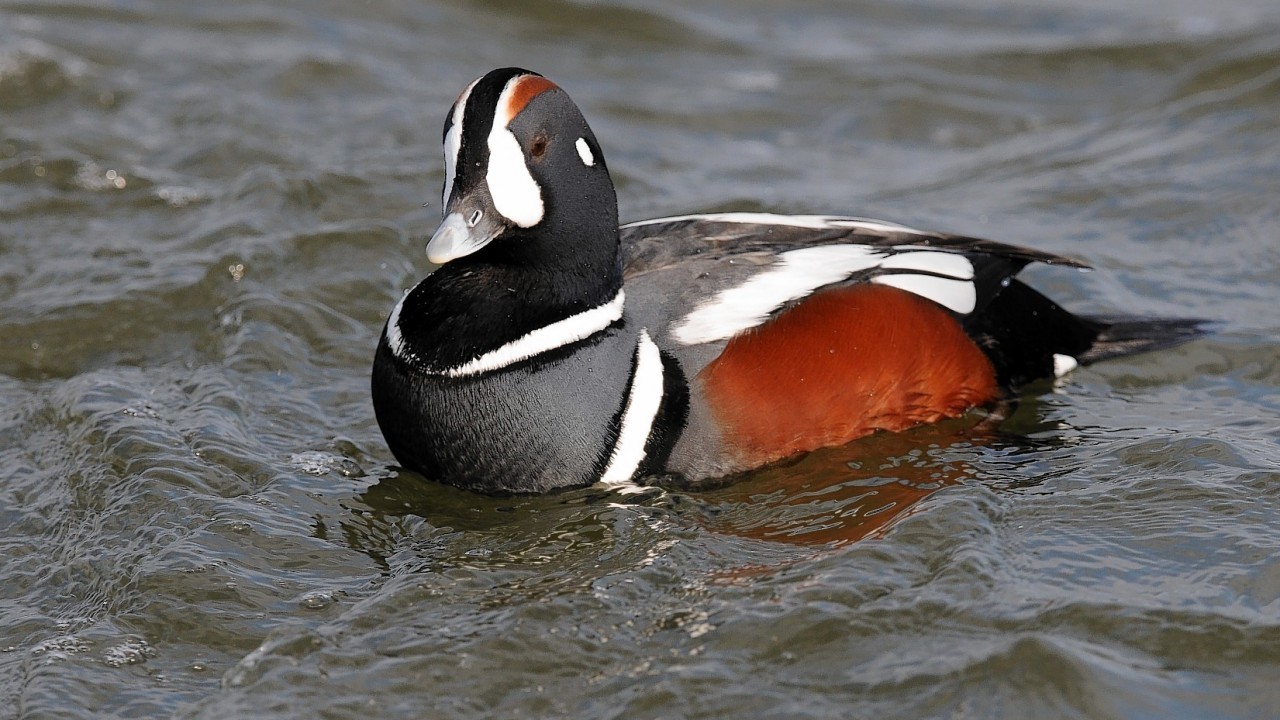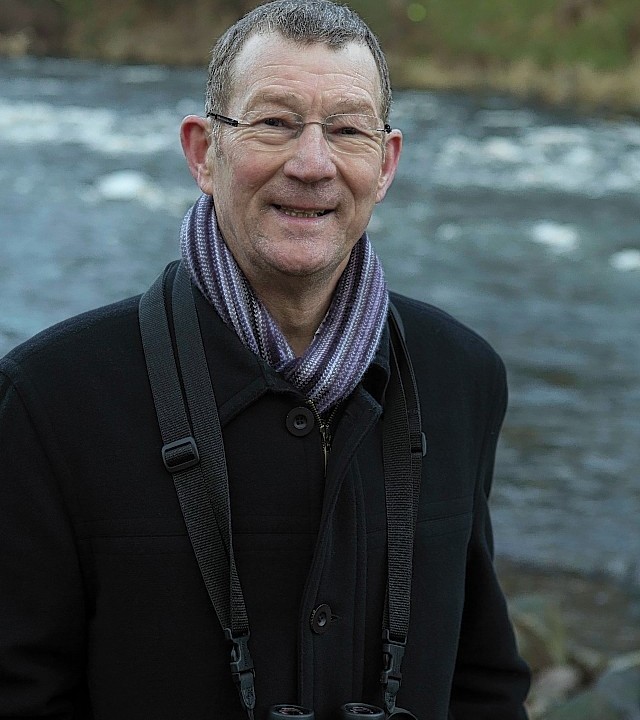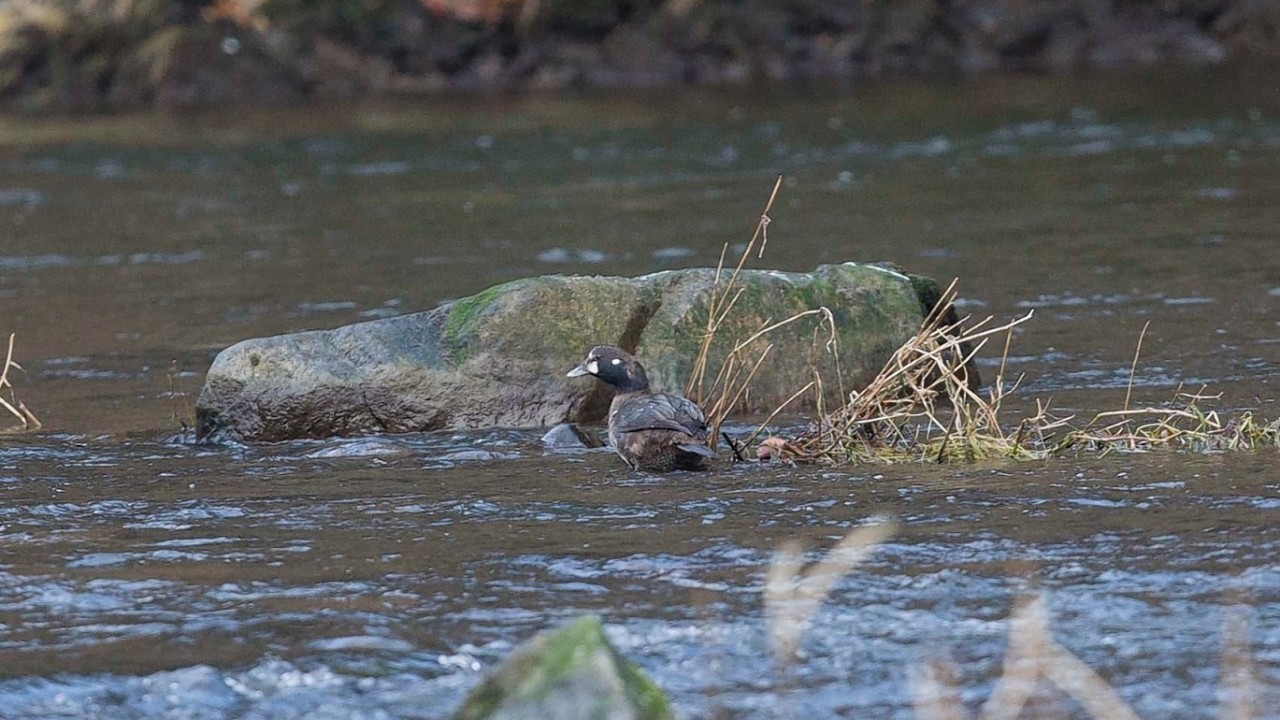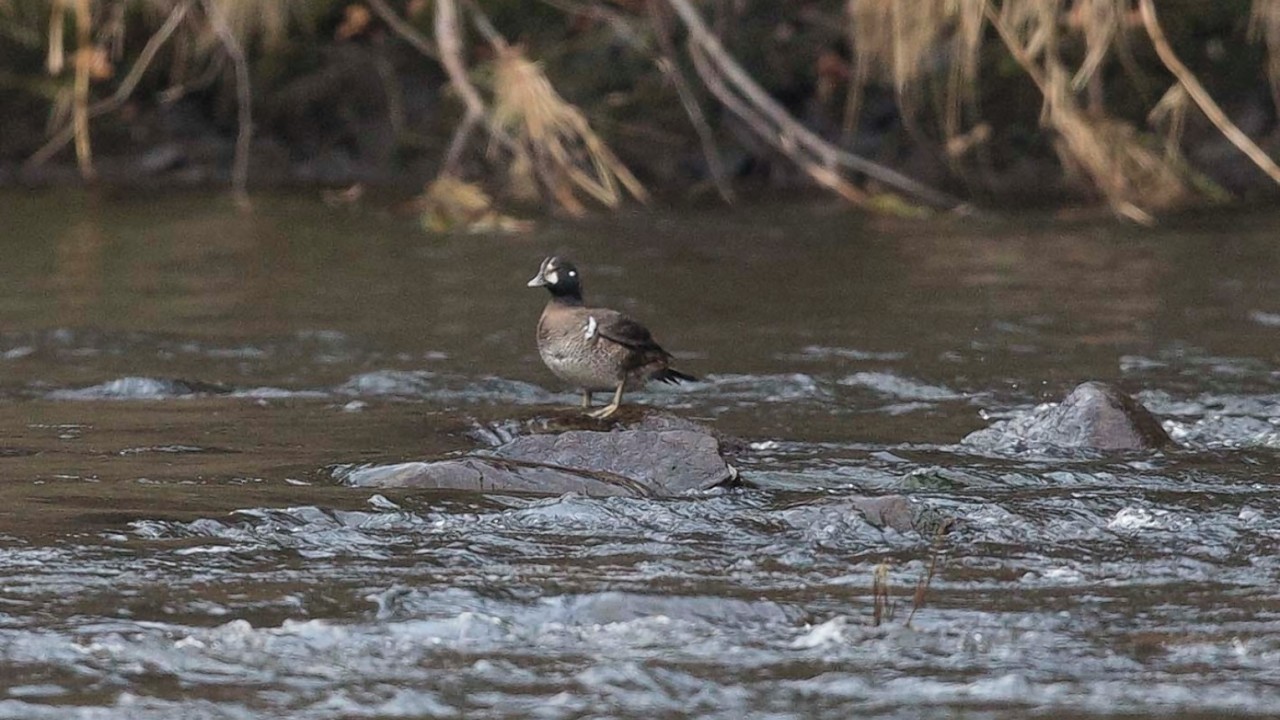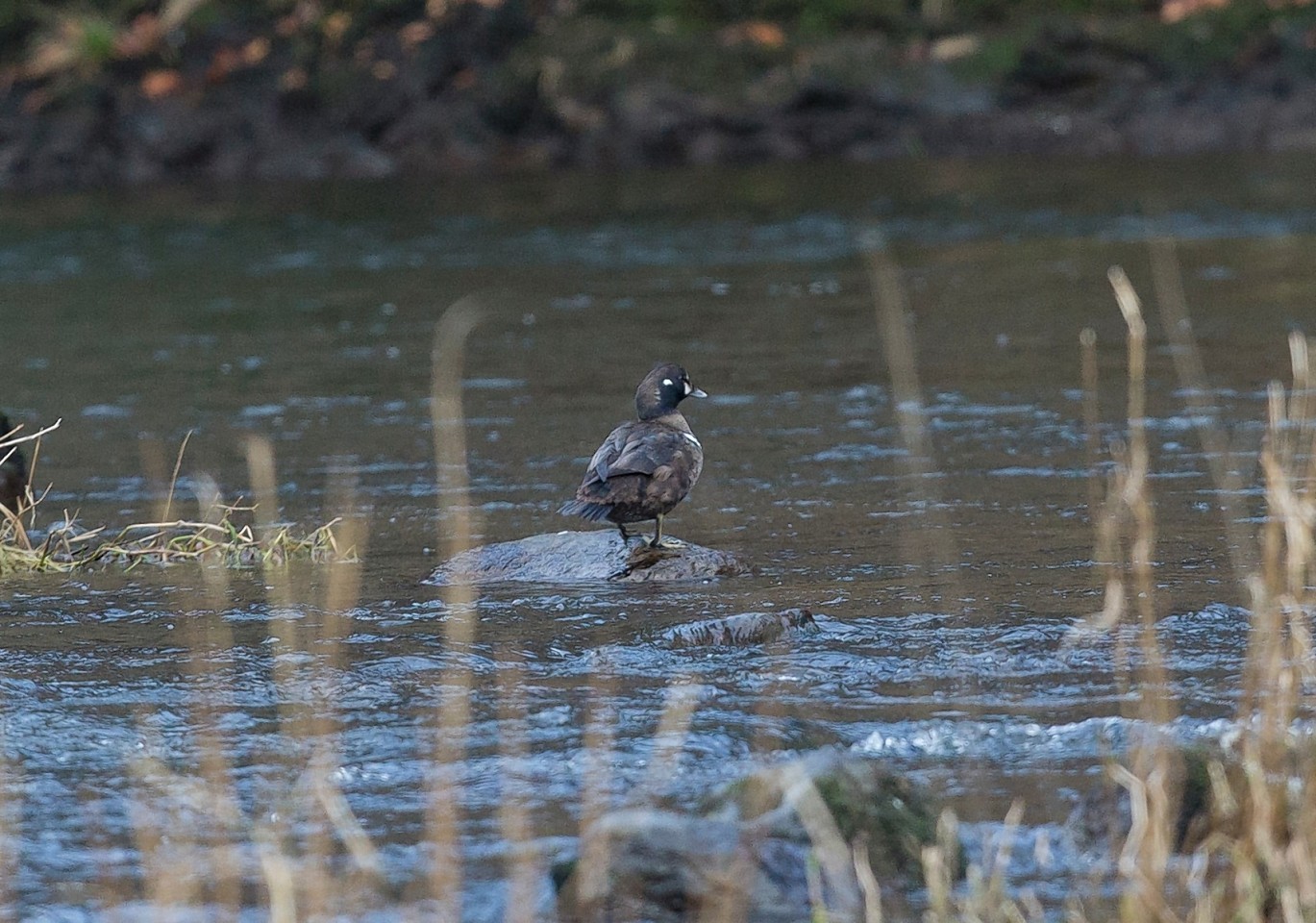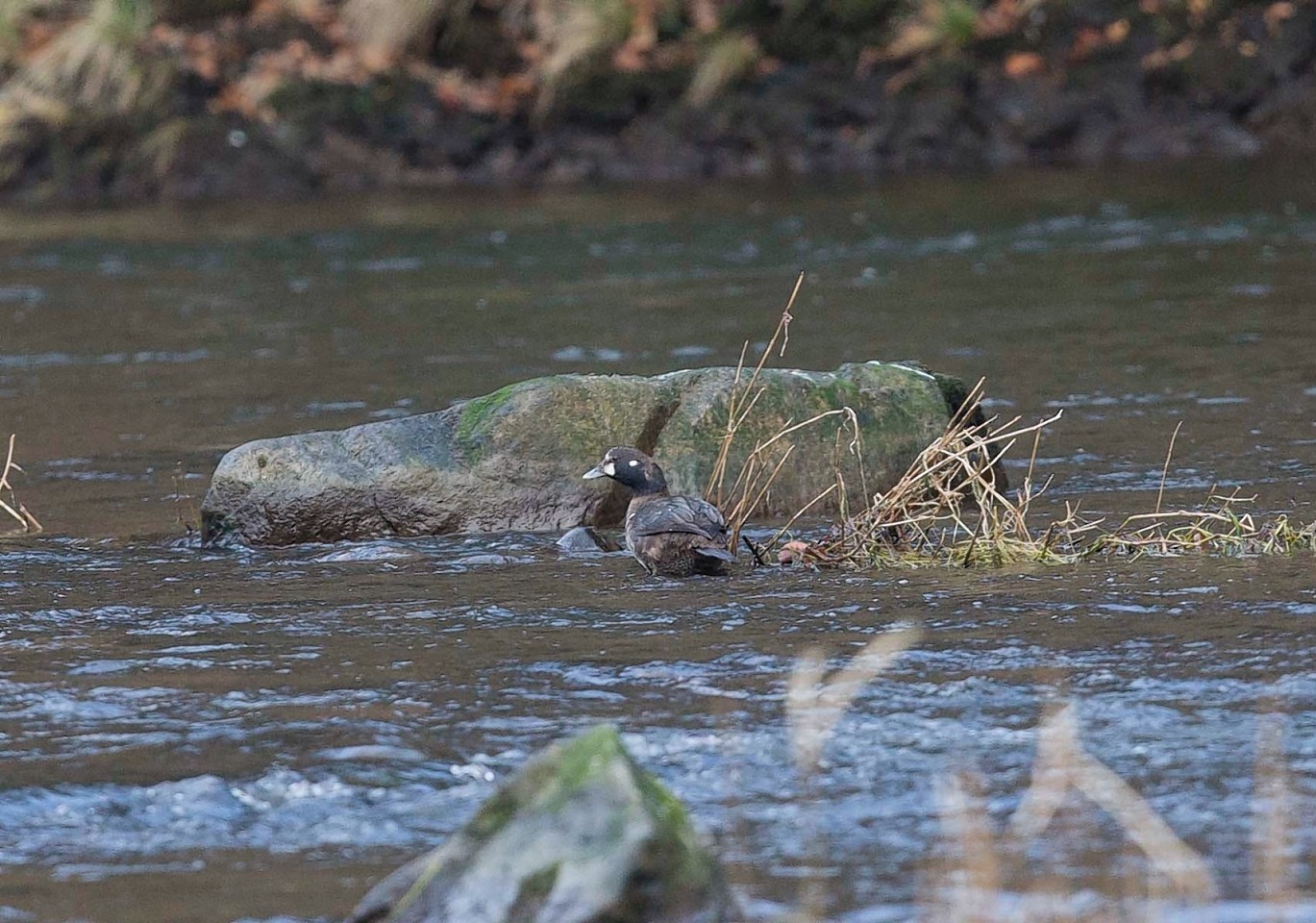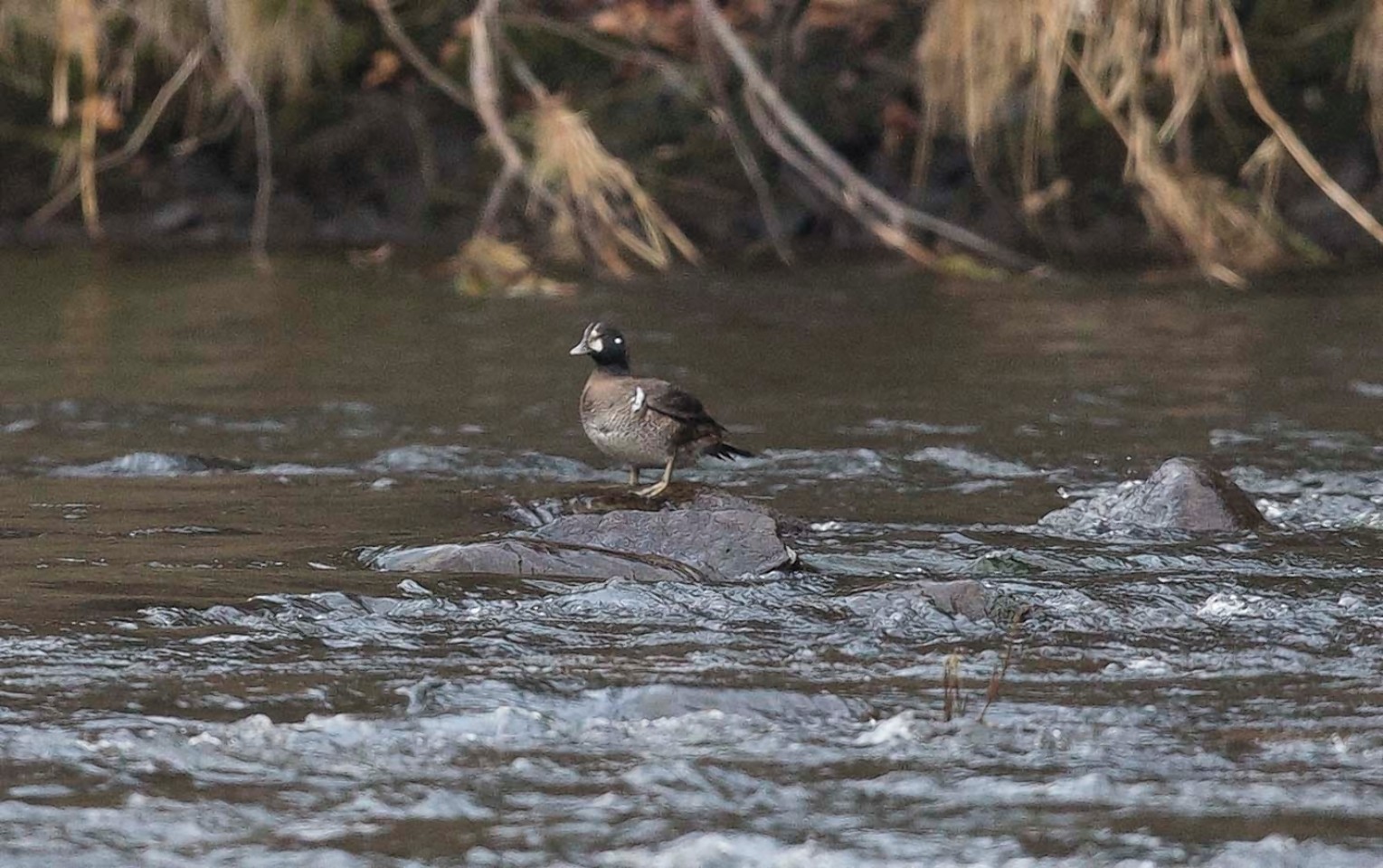Bird watchers flocked to the north-east yesterday to catch an “exceedingly rare” glimpse of a harlequin duck.
The colourful visitor turned up on the Don estuary at Seaton Park in Aberdeen on Saturday afternoon and has been observed closely by eagle-eyed enthusiasts ever since.
The bird is normally found in North America and eastern Russia, often wintering in the warmer climes of Korea and California, but has hardly ever been seen in the UK.
Chairman of the Aberdeen and district RSPB group, Mark Sullivan, said: “It’s very exciting. This is the first time a harlequin duck has been seen in north-east Scotland and is probably only the 12th record for Scotland.
“This morning probably more than 100 people arrived to try to see it. Early on, it was local birdwatchers but it’s now attracting people from further afield.
“Of course it could leave tomorrow, but it might stay and if it stays a long time we might get to see it develop its spectacular breeding plumage.”
Harlequins breed on fast-flowing streams in Iceland, Greenland, in North America and East Siberia.
Adult breeding males have a dark slate blue neck and head with a large white crescent marking in front of the eye, a small round dot behind the eye and a larger oval spot down the side of the neck.
A black crown stripe runs over the top of the head, with chestnut patches on either side leading down to a black-bordered white collar and a lighter slate blue body with chestnut sides. and a long, black pointed tail.
The last two mainland records for harlequin sightings were at Ayrshire in 1996 and Wick in 1991. Across the UK, there have been about 20 since records began.
Rob Leslie, sales co-ordinator for the Aberdeen and District RSPB local group, found the exotic duck while out for a walk in the park on Saturday.
The 63-year-old university lecturer said: “There have been strong north-westerly winds, it could have just got lost.
“It started off my year rather well.”
Fiona McLean, 53, travelled north from Glasgow to see the duck yesterday.
She left her home at 6am and said it was well worth the early start.
“It is a fabulous bird,” he said.
“It is a first-winter drake and it’s quite small, a lot smaller than a mallard.”
